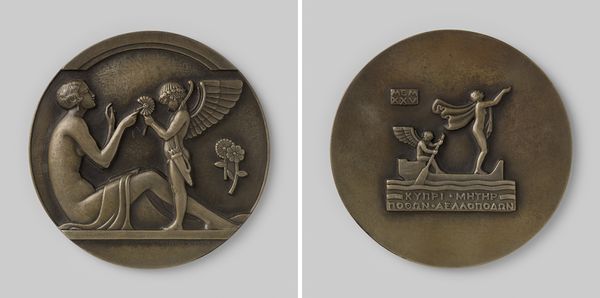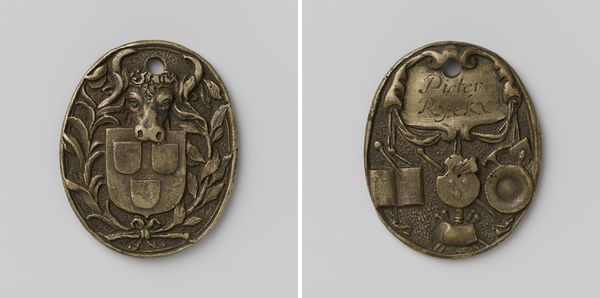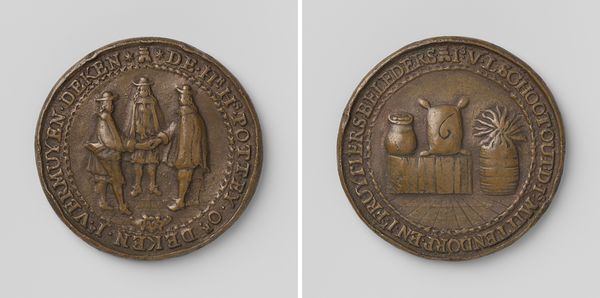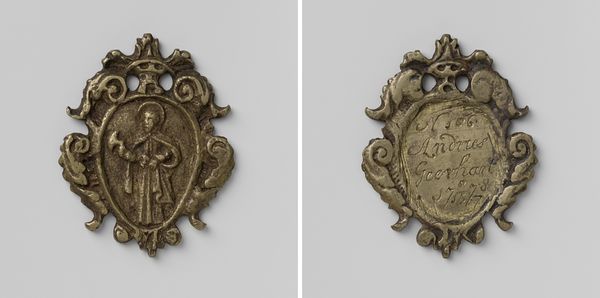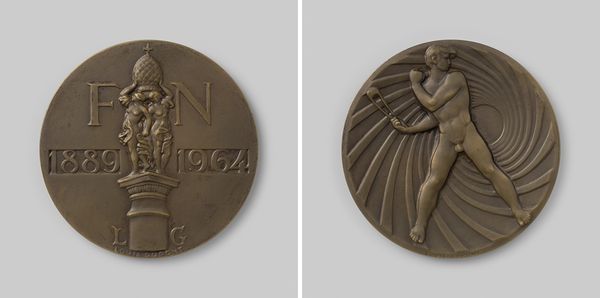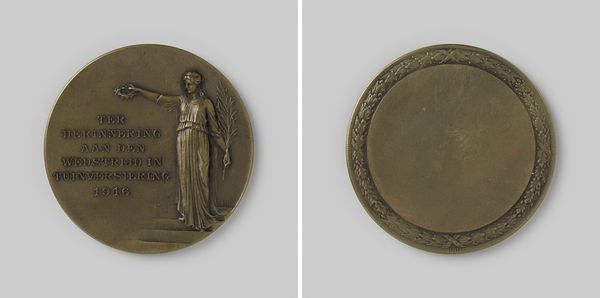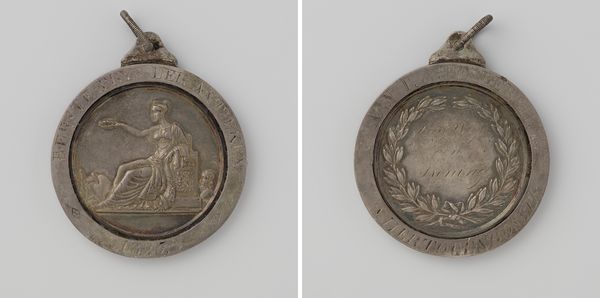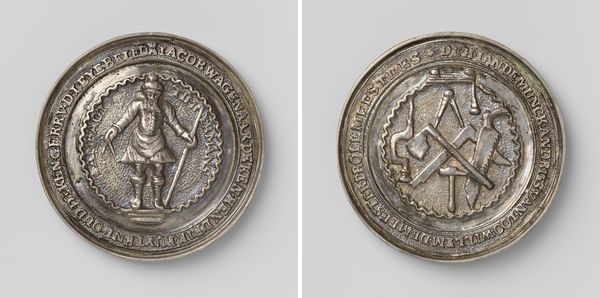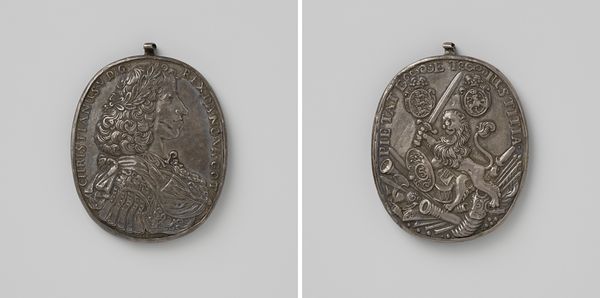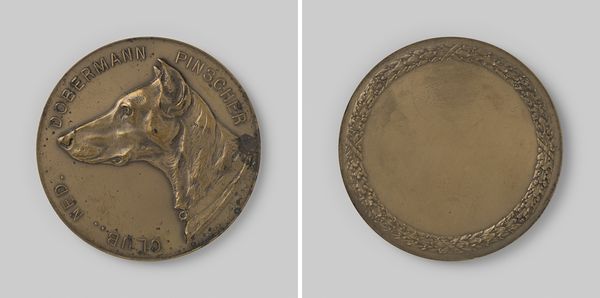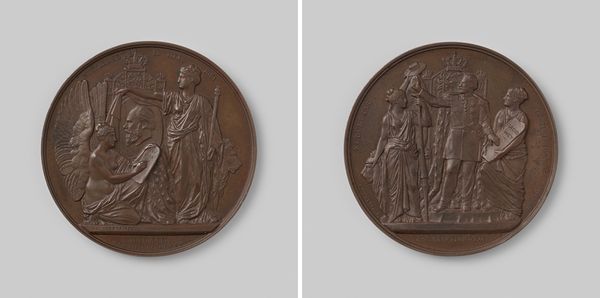
Dimensions: length 7.1 cm, width 7.2 cm, weight 1454 gr
Copyright: Rijks Museum: Open Domain
Curator: This medal, designed by Adolph Alexander Weinman in 1904, commemorates the Louisiana Purchase Exposition in St. Louis. It's cast in bronze with a neoclassical relief design. Quite striking, wouldn’t you say? Editor: It is! At first glance, the overall composition feels a bit like a historical coin or emblem—very formal, even regal. There’s something about the symmetry that makes it feel solid, secure. Curator: Yes, the symmetry plays a key role. Look at the allegorical figures on the obverse. You have America, fully clothed and matronly, encountering the Spirit of Louisiana as a near-nude young maiden, representing potential. Editor: Ah, the almost classical motif of discovery. And that neoclassical element is quite evident, harking back to idealized forms and heroic narratives that empires like to project. So how was this received at the time? Curator: Well, the Exposition itself was a massive spectacle of progress and national pride, even given its backdrop within the problematic narrative of colonial expansion and dispossession. The medal served as a symbolic prize for various achievements showcased during the event, cementing its status and propagating the vision of an expanding America. Editor: It’s fascinating how imagery like this perpetuates a certain story. The choice of a youthful figure for Louisiana seems…loaded, suggesting vulnerability awaiting American strength and governance. What's depicted on the other side? Curator: On the reverse, you see the American eagle atop a banner, symbolizing victory. Dolphins below, framing a shell. Again, classic motifs—suggesting a connection to the sea and trade, emphasizing that newly acquired land's connection to resources and commerce. Editor: The juxtaposition is compelling. It really makes you consider the image not only as celebratory but also as an assertion of dominance—the United States cementing its footprint. Did people see the complexities back then? Curator: The medal encapsulates an era, certainly. But remember, the historical narrative always has multiple layers and voices. To understand it today, one must analyze not only the intent but also the effects and the legacy of that intent. The Exposition wasn't just a celebration of progress, but a monument to ongoing social, cultural and racial injustices. Editor: Absolutely, reflecting on an image like this can reveal so much about what was deemed important—or conveniently overlooked—during a particular moment. Curator: Precisely. And in understanding these layered messages we can understand something about our own place in the continuing unfolding story of both America and the people that it’s held within it.
Comments
No comments
Be the first to comment and join the conversation on the ultimate creative platform.
